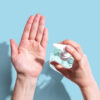The world changed in March 2020, when the country — and the planet — shut down to help slow the spread of COVID-19. For most of us, the pandemic signaled the first time we were asked to shelter in place, maintain our distance from our friends and neighbors, forgo handshakes and hugs, and cover our faces.
Even as the world slowly re-opens and we all learn to adjust to this new normal, even in life after quarantine, numerous questions remain. To combat the uncertainty, many of us have resorted to Googling the latest vaccine news, meticulously tracking positivity rates in our cities and hanging on every word from CDC officials and television health pundits. To streamline the process, we’ve compiled 10 of the most commonly asked questions about COVID-19 and answered them with the help of a top doctor and CDC guidelines. Consider this your Coronavirus FAQ.
Reports about asymptomatic transmission rates and dangers seem to vary. What’s the real deal?
The COVID-19 virus is highly contagious, about twice as infectious as the flu, says Dr. Camron Nelson, the President and CEO of Cooper Clinic and a preventive medicine physician. And it has a long incubation period of up to 14 days, which means that we can potentially all infect each other before we even know we’re sick.
“Carriers can be most contagious in the 48 hours before they have symptoms,” he says. “It is estimated that up to 50% of COVID-19 infections are contracted from individuals that did not have symptoms at the time. In other words, many COVID-19 infections are spread from people that are not sneezing or running a fever — they feel completely normal. It is these folks that are propagating the pandemic. And that could include you!”
How effective are masks?
“The COVID-19 virus is most often transmitted through exposure to droplets in the air from an infected person,” says Nelson. “These infected droplets can linger in the air for longer than once thought [one study suggests that one minute of loud talking can produce droplets that remain in the air for more than eight minutes]. This is the reason that it’s important we all wear masks.”
Cloth face coverings may not be 100% effective, but they can trap droplets that are released when the wearer talks, coughs, or sneezes. Per the CDC, masks help prevent people who have COVID-19 (even asymptomatic carriers) from spreading the virus to others, including people in higher-risk groups and front-line workers. Of course, face coverings work best when they’re widely used in a community and employed alongside other preventative measures, such as social distancing and frequent hand washing.
How often should I wash or discard my mask?
“The CDC recommends washing your cloth mask after each day’s use with your regular household laundry,” says Dr. Nelson. Dry it in the dryer on the highest heat setting or air dry it, preferably in direct sunlight. He suggests rotating three to four cloth masks to keep them fresh, clean, and free of COVID-19, and changing out disposable masks every day. If you want to clean your disposable mask, don’t spray it with alcohol, as this can impair the filtration efficiency.
When is it okay to start shaking hands and giving hugs again?
“Given the history of viral pandemics and the nature of the COVID-19 virus, it will likely be many months before we can all relax the current social distancing guidelines,” says Dr. Nelson. So expect elbow bumps and virtual hugs to be the norm well into 2021. Elbow bumps significantly reduce transmission potential since, unlike our hands, we don’t touch our elbows to our faces. But they still require us to get within six feet of another person, so the safest way to avoid transmission is to avoid all contact.
Should I be cleaning my packaged foods and deliveries with an all-purpose cleaner?
According to Dr. Nelson, it is reasonable to wipe down groceries and takeout containers with a disinfectant wipe. But it’s more important to wash your hands for 20 seconds with soap and water or use a hand sanitizer with at least 60% alcohol after handling deliveries, groceries, and mail.
What surfaces can the virus live on, and for how long?
Per the CDC, coronaviruses on surfaces and objects naturally die within hours to days. Warmer temperatures and exposure to UV light, including sunlight, will reduce the time the virus survives on surfaces and objects. Dr. Nelson also points to guidelines showing that “It may be possible that a person can get COVID-19 by touching a surface or object that has the virus on it and then touching their mouth, nose, or possibly their eyes. Though, this is not thought to be the main way the virus spreads.”
If I choose to go back to the gym, how should I change my gym hygiene routine?
“It’s important to maintain at least six feet of distance between others at the gym, just like anywhere else,” advises Dr. Nelson. “Even though it is uncomfortable, wearing a mask in the gym is essential to limit airborne transmission of COVID-19. All equipment should be wiped down with disinfecting wipes before and after use, and hand sanitizer should be used liberally and frequently during your time in the gym.”
How often should I get tested once I begin to resocialize?
According to Dr. Nelson, routine interval COVID-19 testing of asymptomatic individuals is not recommended at this time.
What markers would signal that it is time to get tested?
He notes that you should self-quarantine immediately and take your temperature daily if you experience any of the following symptoms: a fever, which may be associated with body aches and headache; loss of taste or smell; or cough. Other early symptoms may include nausea, vomiting, and diarrhea are also signs that it’s time to get a COVID-19 test.
Can I give COVID-19 to my pets or contract it from them?
According to the CDC, it may be possible to spread COVID-19 between people and animals, and the CDC is aware of a small number of pets, including cats and dogs, reported to be infected with the virus. It’s believed that the transmission occurred the same way human-to-human transmission occurs: through close contact. However, the risk is considered to be low. To be safe, do not let pets interact with people outside the household. And if a person inside the home becomes sick, isolate them from everyone, including pets.






